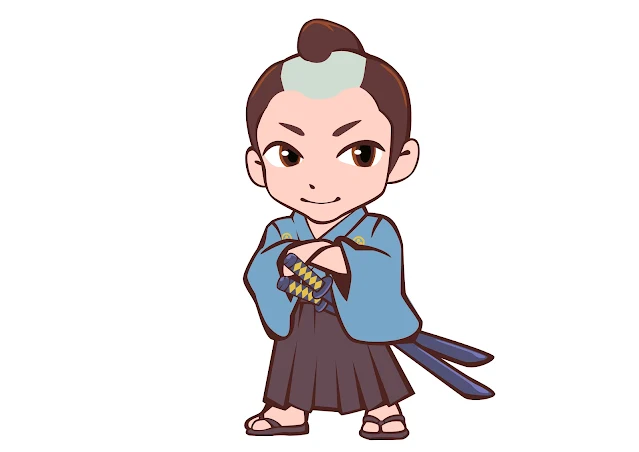
Step back in time and immerse yourself in Japan's rich culture and history with the traditional hairstyle known as Chonmage.
This unique hairstyle, originating from the Heian period (794-1185), has been passed down through generations and has become a symbol of prestige and tradition.
Chonmage has played an important role in Japanese society from the samurai class to sumo wrestlers.
Today, this distinctive hairstyle is primarily worn by kabuki actors and sumo wrestlers, and its removal is considered a significant moment in a wrestler's retirement ceremony.
Discover the fascinating history behind Chonmage and explore the cultural significance of this timeless hairstyle.
{tocify} $title={Table of Contents}
What is Chonmage?
The chonmage is one of the most common hairstyles seen on men during the Edo period (1603-1868), in which the hair is shaved from the front to the top of the head and the rest is tied up.
It was generally worn by the elderly or those with little hair, but all mage tied by men in the Edo period is sometimes referred to as chonmage.
However, to be exact, chonmage is a different style than ichō mage, which is commonly tied up.
Characteristics of Chonmage
Since the end of the Muromachi period (1333-1573), the custom of rocho (shaving the top of the head) has spread, and the way the chonmage was tied differed greatly from period to period.
The adult male chonmage has the following two styles:
- Chasenmage in which bundled hair is wrapped with a string called motoyui and the tip is exposed
- Mage with the tip of the motoyui folded in half
In addition, men before genpuku wore wakashumage, in which the bangs were left and the middle part of the hair was shaved, and genpuku the bangs were shaved off.
History of Chonmage
The chonmage hairstyle originated in the Heian period (794-1185) when aristocrats wore cap-like crowns and tied their hair to secure it.
During the Warring States period and the beginning of the Edo period, cultural attitudes towards men's hair shifted following:
Valuing a full head of hair and a beard → Considering it barbaric
As a result, by the 1660s, all men, including samurai, were forbidden from wearing beards and were required to shave their heads.
The Meiji Restoration in the 19th century modernized the appearance of upper-class Japanese men by cutting their hair short and effectively abandoning the chonmage.
The change was enforced by the Dampatsurei Edict issued by Emperor Meiji.
Some people were happy about the liberation of chonmage after the Meiji Restoration, but those who chose conservative men's chonmage were looked down upon as 'chonmage head.'
Sumo of Chonmage
The chonmage hairstyle is now primarily worn by kabuki actors and sumo wrestlers.
In sumo style, the hair is not shaved off, but it is thinned or the crown of the head is shaved to make it easier to tie the hair in a topknot.
Sumo wrestlers have to wear special hair styles.
They have to wear a chonmage as soon as their hair is long enough.
More experienced wrestlers need to wear a special style called an ōichō and so on.
This style looks like a fan.
The Japan Sumo Association employs hairdressers called tokoyama to cut and prepare sumo wrestlers' hair.
In sumo wrestling, when a wrestler decides to retire, there is a special ceremony.
Important people in the wrestler's life are invited to come and cut off the chonmage.
The last person to cut it off is usually the wrestler's trainer.
Sometimes, the wrestler wears a more elaborate hairstyle during the ceremony.

Your Gateway to Japan's Wonders! Immerse yourself in the beauty, culture, and adventures that Japan has to offer.
Check It Out!
Post a Comment